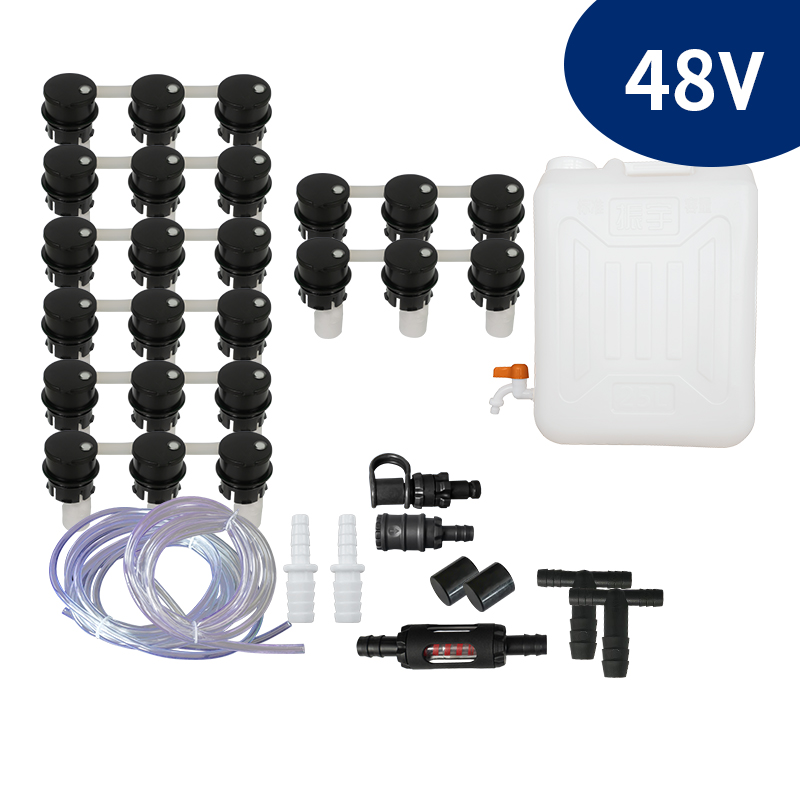Adding water to the forklift battery is one of the most important tasks in battery maintenance. The use and cycle life of the battery are also inseparable from daily maintenance. Regularly adding water to the battery will help maintain its capacity and prolong its service life and operation. time. Not only does this reduce downtime and increase productivity, it also reduces the cost of replacing batteries.
During the charging, discharging and storage process of the electric forklift battery, part of the water will evaporate due to the use environment and internal high temperature reaction. During the daily charging process of forklift lead-acid batteries, the water in the electrolyte will be electrolyzed into hydrogen and oxygen, especially at the end of charging, when the temperature of the electrolyte is very high, and the chemical reaction in the forklift battery is very violent. It will bubble, the battery will heat up, and the water in the electrolyte will be more easily electrolyzed into hydrogen and oxygen. Over time, the forklift battery will run out of water. If you do not add water to the battery of the electric forklift, the battery will be in a state of water shortage for a long time, and the service time will be shortened if it is mild, and its life will end early if it is serious.
How to equalize lead-acid batteries’ voltage? You can use a battery equalizer.

How long is the water filling cycle of the forklift battery?
The charging and discharging of the forklift battery will cause the electrolyzed water to volatilize. How often do we need to add distilled water? Forklift batteries are generally filled with water about once a month. The number and amount of water added to forklift batteries can be determined according to the workload and frequency of work. If the battery is not equipped with an automatic filling system, check the electrolyte level after charging. When it is lower than the allowable liquid level (the height of the separation plate or the specified height), add qualified distilled water to the specified height; when it is higher than the allowable liquid level, pump it out to the specified height. Adding water to electric forklifts is mainly to protect the battery pack, so that the charging capacity remains the same each time; when the electric forklift is in use, the battery will generate heat, and the water will be continuously consumed. Otherwise, the heat of the battery will not be released in time, which will directly affect the life of the battery.
How to add water to the battery scientifically
1.What water to add?
The hydration of the forklift battery should be supplemented with distilled water or deionized water, and do not add battery stock solution or tap water. The original battery liquid will dilute or increase the original specific gravity of the electrolyte, causing the performance of the battery to decline. Excessive impurities in tap water will cause the battery to react weakly. Adding tap water for a long time may cause a short circuit and damage the battery. Supplementary water should be distilled water and should not be replaced by pure drinking water. Because pure water contains a variety of trace elements, it will have adverse effects on forklift batteries.
2.When to add water to the battery?
It is not recommended to add water when the battery is in use. Water should be added at the end of charging (one hour before the end of charging). When charging, the internal bubbles of the battery are churning and the reaction is violent. to a balanced effect.

3.Battery replenishment tool
The battery intelligent water adding system can solve various disadvantages of manual water adding maintenance and reduce the loss of battery life caused by improper maintenance. The battery intelligent water adding system is a patented product. It is an automatic water replenishment device developed for liquid-rich batteries. It can completely replace the manual water addition maintenance operation of the battery, monitor the water shortage status of the battery in real time, automatically replenish water, and automatically stop when it is full of water. , After the equipment is installed, the electrolyte level can be kept in a healthy state throughout the whole process, ensuring the stability and balance of the electrolyte characteristics of the battery, optimizing the use efficiency of the battery equipment, and prolonging the service life of the battery.
